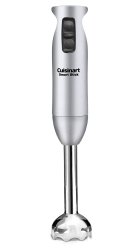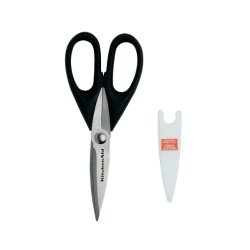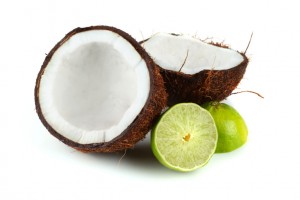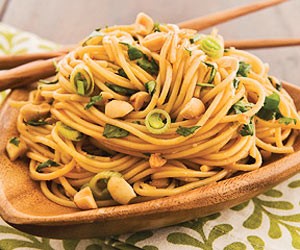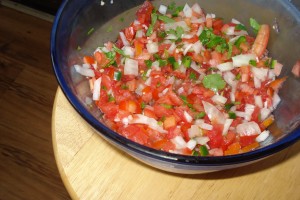 From the beginning of my wine-making adventures I always prided myself in the fact that all of my wines, for better or worse, were my own homemade, from-scratch recipes. I started using only juice concentrate. I moved into making small batches with fruit, sometimes on its own, sometimes in combination with juice concentrate. I had many successful whites and many successful blushes, and even successful meades.
From the beginning of my wine-making adventures I always prided myself in the fact that all of my wines, for better or worse, were my own homemade, from-scratch recipes. I started using only juice concentrate. I moved into making small batches with fruit, sometimes on its own, sometimes in combination with juice concentrate. I had many successful whites and many successful blushes, and even successful meades.
The trouble was red. I’m an equal opportunity wine drinker, but when given the choice, I opt for red nine times out of ten. Naturally, when faced with a choice of juice concentrates for my first attempt at a gallon batch, I picked red grape juice. It was a good batch, but it turned out blush. Great! I was happy enough for a dry and drinkable first batch. When I took another attempt at red, I went for two cans of concentrate, aiming for a red.
Well… it wasn’t red. It wasn’t exactly a traditional blush, either. The color was more of a fuschia. Okay then… surely three cans of concentrate would do it. Properly constituted, three cans of concentrate is MORE than a gallon of juice. But alas, still not red! I made a few three canister gallons with a couple different types of dark juice, and all of them turned out to be a deep ruby color, but not red. I even tried adding raisins to my batches when a wine connoisseur advised me that grape skins add important tannins and flavor profiles during fermentation. Clear ruby again! Tasty… in fact one turned out to taste just like cream sherry… but still not red.
 I suppose one should consider that the definition of a “red wine” is not fixed. What makes a red wine a red wine and not a blush wine? Where do we draw the exact line between red and blush? My own colloquial reckoning of red vs. blush is that blush, no matter how deep in color, is easy to see through. A red wine, if held up to the light, may have refractions of light shining through it, but also has a somewhat inky, light-blocking quality. It is a continuum, of course. A pinot noir is going to be the most see-through of the reds. Cabernets or dark chiantis, less light refraction. But ultimately, I know a red to see it and none of my attempts fit my definition.
I suppose one should consider that the definition of a “red wine” is not fixed. What makes a red wine a red wine and not a blush wine? Where do we draw the exact line between red and blush? My own colloquial reckoning of red vs. blush is that blush, no matter how deep in color, is easy to see through. A red wine, if held up to the light, may have refractions of light shining through it, but also has a somewhat inky, light-blocking quality. It is a continuum, of course. A pinot noir is going to be the most see-through of the reds. Cabernets or dark chiantis, less light refraction. But ultimately, I know a red to see it and none of my attempts fit my definition.
I took to the internet and googled. A lot of people use store-bought kits to make red wines at home, but I wasn’t ready to concede defeat — or to purchase a $70-$80 kit. I found one recipe by a home wine-maker who made a gallon of red with 4 cans of Welch’s Grape Juice Concentrate. FOUR! That’s the equivalent of two gallons of juice condensed into one.
In one last ditch attempt I tried the four cans in one gallon. At long last! A red wine that truly turned out red! Here is my basic recipe for Concord Red, honed over the course of several ensuing batches. Please ready my Getting Started blog before actually attempting any of my recipes. All recipes assume previous at least some knowledge of my general process:
SARAH’S CONCORD RED WINE
4 cans of concord grape concentrate
zero additional sugar
1 cup of strong black tea
1/2 teaspoon yeast energizer
1/2 teaspoon of bentonite
1/2 teaspoon pectic enzyme
red wine yeast
Hydrate your yeast and brew a cup of tea. Heat the juice concentrate in a large saucepan, if you like, to sterilize it, but do NOT add any further sugar (the small amount of sugar used in hydrating the yeast is fine). There is more than enough sugar already present in the 4 cans of concentrate. The first time I tried this recipe and added my usual 2 cups of sugar, I could not get the batch to ferment to dry, despite a few separate attempts to restart fermentation.
 Prepare a clean gallon jug. Add the yeast energizer and pectic enzyme. Bentonite isn’t strictly necessary, but I’ve found it’s a safe bet for darker wines, as they are more prone to clearing problems (more about bentonite below). The other significant omission here is acid blend. Almost all my blush and white recipes include acid blend, but it will make your reds too crisp (another lesson learned from making kits… more below).
Prepare a clean gallon jug. Add the yeast energizer and pectic enzyme. Bentonite isn’t strictly necessary, but I’ve found it’s a safe bet for darker wines, as they are more prone to clearing problems (more about bentonite below). The other significant omission here is acid blend. Almost all my blush and white recipes include acid blend, but it will make your reds too crisp (another lesson learned from making kits… more below).
Combine the concentrate and tea with your additives already in the jug. If the mixture is still hot to touch, wait before adding the yeast. Once yeast is added, fill jug most of the way full, but maybe an inch or two below the neck. Darker and denser wines ferment vigorously at first. If you fill the jug too high, it will froth up into your balloon or airlock. Skimp on the extra liquid now, and top it off later when you rack it into a second jug with the campden tablet at the end of fermentation.
So, my concord red recipe is now honed… but it’s sort of limiting. I tried making a quadruple concentrate recipe with other types of red juice, Wild Berry and Blueberry Pomegranate, but both of these turned out dark ruby blush. The 4 cans of concord is the only way I’ve been able to make a “real red” using store bought juice. I can get a little creative by adding fruit (or preserves) to this recipe. I’ve done blackberry, blueberry and strawberry reds this way. But I still felt my red repertoire was lacking.
Thus my temptation kicked in to try a kit. I asked our wine-makers at the studio and they reported having tried a wine kit with success, but little creative gratification, saying that it felt more like putting together a chemistry set than making a wine of their own.
But, there are worse ways to obtain six gallons of red wine, right?
 My resolve was sealed upon further research. Amazon offers wine kits in the $45 to $55 range (depending on if you use their Subscribe & Save option to order it) with free shipping. When I crunched the numbers, I realized I was paying basically the same price, per gallon, for the juice alone to make the 4 canister recipe above… and let’s face it, even the best concord wine is still concord wine. The complexity of a real varietal wine grape at roughly the same price is no contest for concord. It would be worth the price for the juice alone, but these kits also come with corks and additives and yeast and sugar already added to the juice. The kits also come with labels and shrink caps for 30 bottles, but my thought is… I go to enough trouble getting these things OFF the wine bottles I intend to reuse, why on earth would I then put them back on?
My resolve was sealed upon further research. Amazon offers wine kits in the $45 to $55 range (depending on if you use their Subscribe & Save option to order it) with free shipping. When I crunched the numbers, I realized I was paying basically the same price, per gallon, for the juice alone to make the 4 canister recipe above… and let’s face it, even the best concord wine is still concord wine. The complexity of a real varietal wine grape at roughly the same price is no contest for concord. It would be worth the price for the juice alone, but these kits also come with corks and additives and yeast and sugar already added to the juice. The kits also come with labels and shrink caps for 30 bottles, but my thought is… I go to enough trouble getting these things OFF the wine bottles I intend to reuse, why on earth would I then put them back on?
Intrigued by the promise of varietal wine grape juice at the same cost as concord, my only concern was how much control I would have over the process? What if I wanted to use my own additives? My own yeast? Etc., etc… I figured the yeast would have to be packaged separately, but would the initial additives already be dissolved in the juice? The sugar is, but not the additives. Essentially, I am free to use whatever additives I please and prepare the juice according to my own recipe, if I wish.
But upon reading the directions provided with the wine kit, I made a few key discoveries. First, the kit did not include any sort of acid or acid blend as an additive, while it was listed as one of the possible ingredients on the box’s master list covering bases for all the varieties in its wine kit line. It did, however, include bentonite, which I had never used before. I was vaguely familiar with this additive as a clearing agent, and so I was curious to read that the directions called for it to be added before fermentation, rather than upon finishing.

I took to the internet to do some research into bentonite. Apparently, it can be added before or after fermentation to aid in clearing, but it is more effective when added at the beginning. The bentonite attaches to certain particles and then drags them down to the sediment layer as it settles. Adding before fermentation means that the bentonite will keep getting kicked up, keeping it circulating throughout grabbing more particles. I added it to my kit and ordered my own supply online right away. It has helped some stubborn old batches to clear, but has done the most wonders for newly started recipes that I’ve had trouble clearing in the past.
I finished up my first wine kit this week, an Italian Sangiovese . It’s difficult to say at this point how it will be. I tried some just to make sure it was dry enough to finish off, which it was, and to make the decision whether to keep it concentrated (it was a 6 gallon kit, but I have only a five gallon fermenter), which I also did. I use my five gallon carboys only for fermentation, and never for clearing/aging. I have only two of these large fermenters, and I have a ton of gallon jugs. To finish off the Sangiovese, and convert it to six gallons, I took 6 one gallon jugs, crushed a campden tablet into each, and then added 3 cups of filtered water to each one before racking the wine into them.
. It’s difficult to say at this point how it will be. I tried some just to make sure it was dry enough to finish off, which it was, and to make the decision whether to keep it concentrated (it was a 6 gallon kit, but I have only a five gallon fermenter), which I also did. I use my five gallon carboys only for fermentation, and never for clearing/aging. I have only two of these large fermenters, and I have a ton of gallon jugs. To finish off the Sangiovese, and convert it to six gallons, I took 6 one gallon jugs, crushed a campden tablet into each, and then added 3 cups of filtered water to each one before racking the wine into them.
The other decision I made, fairly early on, was that I would not add the chemicals included in the kit to clear the wine at the end, chitosan and kieselsol. I’ve never needed such clearing agents before, and I would rather get away with using fewer additives whenever possible. If the Sangiovese becomes a challenge to clear, perhaps I will try these additives in the Chilean Cabernet Merlot kit that is currently in fermentation. Then again, its balloon is already deflating, after only two weeks! I’m guessing it’s because I added a tablespoon of my own yeast energizer to the batch, which I did not do with the Sangiovese… also, it’s been warm this week. I don’t plan to rack the Cabernet/Merlot anytime too soon, though. A quick stir easily fills the balloon back up, and after racking the Sangiovese into jugs, I’m kinda low on jugs. Yikes! Guess I have to get bottling, especially because I’m looking to increase production of Apple. There will be some serious jug shortages this summer, I fear.
Also this week…
Started a batch of double concentrate Apple with 3 times the acid blend and Montrachet yeast in search of that elusive tart cider flavor.
Replaced the Sangiovese in one of my large carboys with a five gallon batch of single concentrate Apple with double acid (i.e. 2 teaspoons per gallon) and champagne yeast.
Racked that annoying Cranberry Apple batch that has been fermenting since October into a finishing jug for aging, along with a 1 1/2 Apple with 2 times acid.
Started a new recipe for my popular Raspberry & Pear wine using Welch’s White Grape Raspberry and two pounds of pears.
 Combine all ingredients in a saucepan or crock pot (use half the water for crock pot). Before adding the the meat, I like to process with my immersion blender to puree, but that’s up to you. The onion and garlic don’t strictly have to be pureed into the sauce, and whole mustard seeds add a nice texture — they won’t be completely pulverized by an immersion blender anyhow. Cook covered on low fire until meat is desired tenderness. If using a crock pot, 4 hours on high or 8 on low should do it. Serve with rice, garnish with parsley.
Combine all ingredients in a saucepan or crock pot (use half the water for crock pot). Before adding the the meat, I like to process with my immersion blender to puree, but that’s up to you. The onion and garlic don’t strictly have to be pureed into the sauce, and whole mustard seeds add a nice texture — they won’t be completely pulverized by an immersion blender anyhow. Cook covered on low fire until meat is desired tenderness. If using a crock pot, 4 hours on high or 8 on low should do it. Serve with rice, garnish with parsley. 1 medium onion, chopped
1 medium onion, chopped
